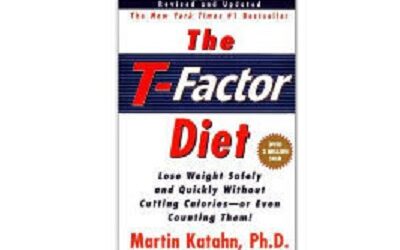Macronutrient Diets
 If you have a goal of putting on lean muscle mass, you’ll want to focus on getting the right percentage of protein, carbs and fat.
If you have a goal of putting on lean muscle mass, you’ll want to focus on getting the right percentage of protein, carbs and fat.
The macronutrient ratio you’ll actually need will depend on several different factors. By understanding them, you’ll be better equipped to choose the best ratio for your body and goals. To start, your ratio will depend on whether you are building muscle, maintaining it, or trying to keep your muscle while you burn away additional fat.
The amount of protein you’ll need, for example, shifts depending on whether you’re aiming to bulk up, reduce fat or keep everything just as it is. It would be very convenient if there was a magic macronutrient ratio that would work for all people, but that has yet to be discovered. Anyone who tries to sell you a single ratio that will work for all shapes, sizes and goals does not have a complete understanding of the human body and the way it uses its nutrients.
Choosing a Macronutrients Diet
 By taking a closer look at your goals and your shape, you’ll be able to fine tune your macronutrient ratio diet to work for you. This will let you build and maintain your lean muscle mass while clearing away the unwanted fat that just covers up all your great work.
By taking a closer look at your goals and your shape, you’ll be able to fine tune your macronutrient ratio diet to work for you. This will let you build and maintain your lean muscle mass while clearing away the unwanted fat that just covers up all your great work.
Start by examining your fitness goals. Would you prefer to focus on building lean muscle mass or burning fat? Yes, it would be wonderful to do both, but it’s better to focus on one goal at a time so you can do it very well. From there, you can shift things up and work on the other goal. For now, let’s just take one step at a time.
It’s true that you can achieve some degree of lean muscle mass growth and fat loss at the same time, but when you focus on one or the other, you will be able to get far more powerful results from your main goal. The reason is that lower carb ratios tend to help you speed up your body fat burning and higher carb ratios support lean muscle mass growth.
As you become accustomed to following a macronutrient ratio diet, you will be able to make incremental shifts to support muscle building, then fat burning, then muscle building again. This can make it seem as though the two goals are being reached simultaneously. That said, you should master doing one of them first, then move on to try to achieve two incrementally.
While there is a certain amount of research indicating that intermittent fasting can help to achieve both fat burning and lean muscle growth, the study results are inconsistent and it appears that while it may be very effective in some individuals, it’s far less so among others.
Choosing The Right Macronutrients Ratio For You
 When it comes to actually choosing the right macronutrient ratio specific to your fitness goals, many dietitians, nutritionists and doctors use the following:
When it comes to actually choosing the right macronutrient ratio specific to your fitness goals, many dietitians, nutritionists and doctors use the following:
- For lean muscle growth – 40 to 60 percent carbs, 25 to 35 percent protein and 15 to 25 percent fat.
- For fat loss – 10 to 30 percent carbs, 40 to 50 percent protein and 30 to 35 percent fat.
- For maintenance – 30 to 50 percent carbs, 25 to 35 percent protein and 25 to 35 percent fat.
It’s important that you keep your dietary fats up to at least 15 percent. The reason is that your body requires fat molecules to be able to build hormones and if your hormones are suppressed from having consumed too little fat, your body functions – including muscle growth – will suffer. You can also place yourself at a number of different health risks, including malnutrition as a whole spectrum of vitamins are fat soluble.
The next thing you will need to take into consideration as you fine tune your ratio is your body shape. In terms of body building, there are three main body types: ectomorph, endomorph and mesomorph. The odds are that none of them will perfectly describe you. You’re likely going to find that you’re more of a blend between either ectomorph and mesomorph or endomorph and mesomorph.
That said, try to design your macronutrient diet around the body shape that you most closely resemble, even if it doesn’t fit you to a T.
- An ectomorph body shape is essentially slender with smaller shoulders and chest. This usually means a rapid metabolism. It’s easy for this body type to get lean but tough to build mass. To get the most out of the aforementioned ratios (based on your goal), try to aim for the higher side of the carbs, then fill in the remainder with the proteins and fats accordingly.
- An endomorph has a softer body which is usually either apple- or pear-shaped. The build is stockier, limbs are shorter and your metabolism is slower. It’s very easy for you to put on fat around your middle. That said, it’s also easy for you to build muscle pretty quickly. As a result, you will need to choose your fitness goal and then work your ratio around carbohydrate consumption on the lower end of the range.
- If you are a mesomorph, you tend to be naturally muscular. You may describe your body as being athletic. Shoulders are broad, muscles are well defined and the overall bone structure is dense. You likely don’t struggle much with either fat burning or fat loss. That said, you do gain fat more quickly than an ectomorph would. Try to aim for the middle range of the carbohydrate, protein and fat ratio for your fitness goal.
A final consideration often includes gender. That said, the difference between men and women when it comes to the correct macronutrient ratio for their fitness goals may not be as big as you think. Overall, similar ranges of carbohydrates, proteins and fats are required based on fitness goals and body shapes, regardless of whether you’re a man or a woman.
That said, women do tend to find it harder to build muscle mass and to burn body fat overall. Research also indicates that women’s bodies tend to rely more heavily on fat as a source of fuel during a workout. As a result, when choosing the right ratio based on your fitness goals, a woman should nearly always require a lower number of carbs than a man regardless of whether they are building muscle, burning fat or maintaining.
This can seem quite overwhelming at first, but with a bit of guidance from a dietitian or doctor, the learning curve can be a quick one. Resist the urge to consult with your personal trainer, but look to a nutrition specialist with experience in muscle building instead. You’re far likely to obtain accurate information that way.
Macronutrient Diets Reviews
Review: Werewolf Diet
The Werewolf Diet is a fad diet that has become surprisingly popular over the last handful of years. Also known as the lunar diet, it has accumulated a bit of a celebrity following, which helps to explain why it has started taking off. Big names such as Madonna and Demi Moore have supposedly followed this diet.
Review: Slimming World Diet Program
The Slimming World Diet Program has taken off in popularity in the United Kingdom as the latest fad in weight loss.
Review: The T-Factor Diet
The T-Factor Diet is a weight loss program that was first launched in 1989 when Martin Katahn published his first book with that title. This type of dieting became the base for a large number of programs that were used at that time.
Review: The Protein Express Diet
The Protein Express Diet is a low carbohydrate and high protein diet plan. It is a diet book that focuses on providing dieters, who lead busy lifestyles and who are prone to choosing fast food or pre-made meals, with quick and easy food preparation solutions that will help them achieve rapid weight loss.
Review: The Keto Reset Diet
The Keto Reset Diet is a type of dieting technique created by Mark Sisson for the purposes of cozying up to full-on ketogenic dieting. After all, the more conventional form of this eating strategy involves an extreme overhaul of the foods and macronutrient balance consumed. For most people, this is daunting and potentially overwhelming.
Review: The Fast Metabolism Diet
The Fast Metabolism Diet is based on a book by Haylie Pomroy, which first hit the shelves in 2013. Though it didn’t stand out from among the hundreds of other books for many years, it suddenly found in the spotlight when Angela Basset gave it her praise. Basset gave...








